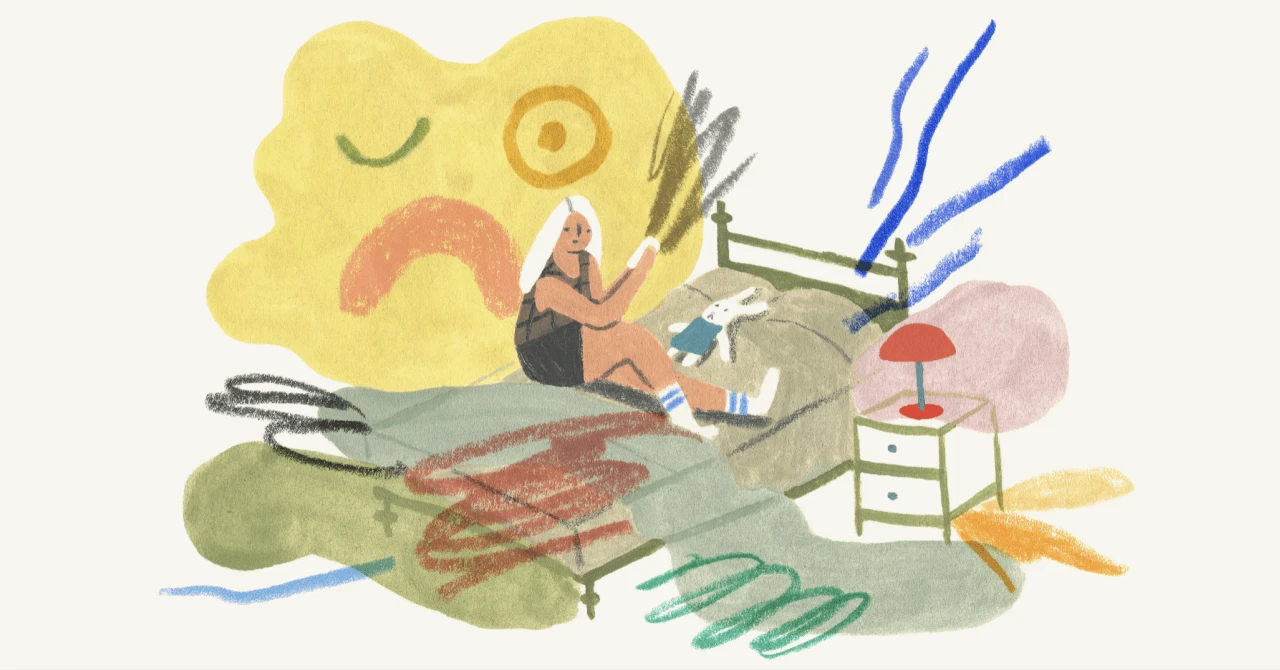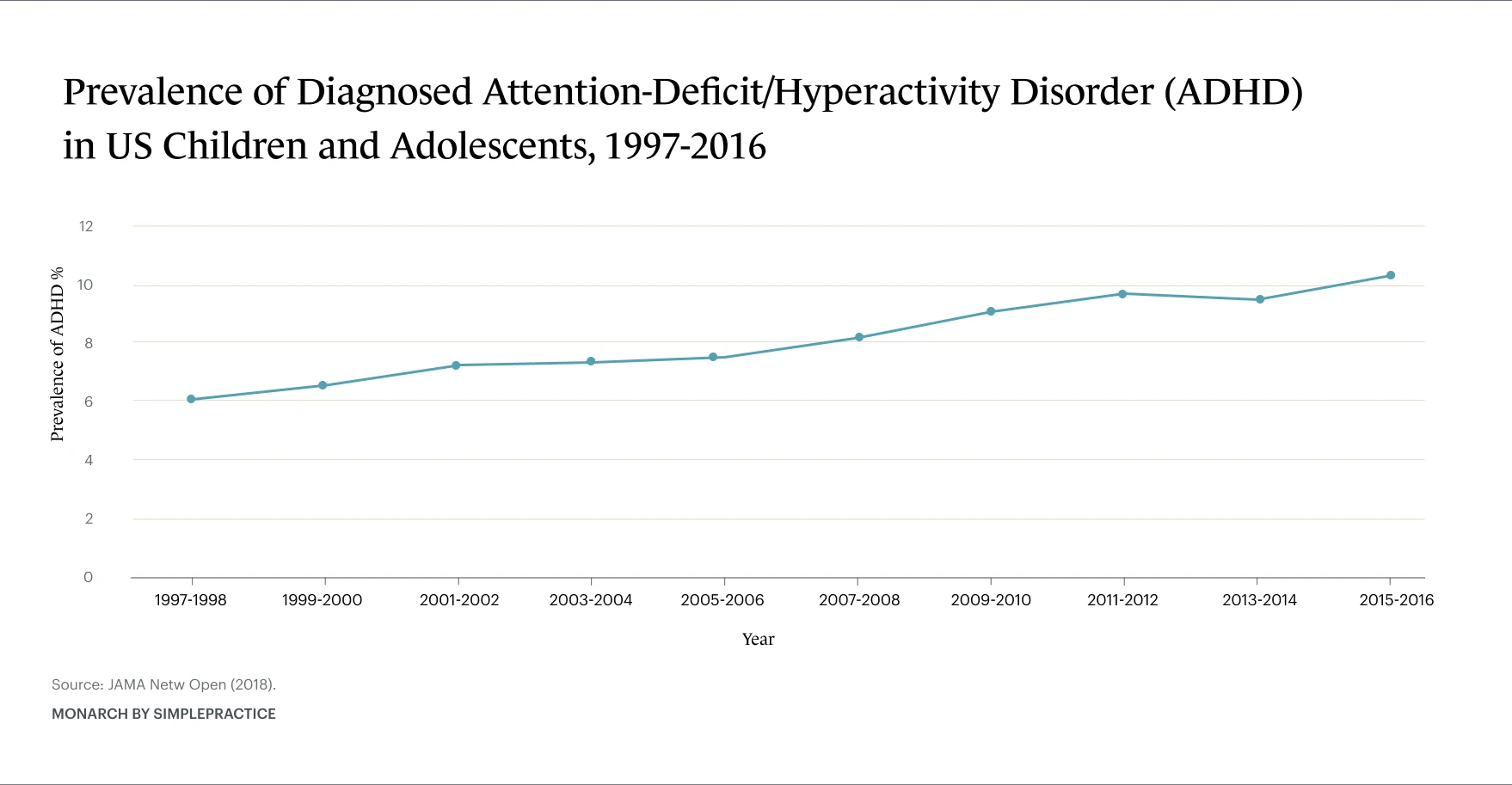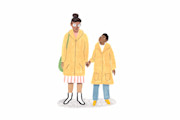For those of you, like us, who may be pondering: "Why is everyone suddenly ADHD?" we looked into the question to find some answers.
For one thing, during recent years many people started wondering whether they might have undiagnosed adult ADHD—attention deficit hyperactivity disorder.
Additionally, Americans’ curiosity about, and searches for, ADHD have spiked to all-time highs, as Google Trends data shows.
Some medical experts estimate 75%-90% of adults with ADHD have not been diagnosed and treated.
Since late 2020, Americans have also searched more than ever on Google for the term “neurodivergent” as well as for online ADHD tests (like this 3-Minute Adult ADHD Test).
Why suddenly so much interest in adult ADHD?
In the past decade, mental health professionals and the American Psychological Association (APA) updated the official definition to more accurately describe the symptoms and experience of adults with ADHD for the first time.
The APA's most recent 2013 updated description of ADHD reflects that this disorder is not just a childhood disorder that disappears in adulthood, as had been previously assumed. (More on this later.)
"Unfortunately, the diagnosis of adult ADHD is vastly under-recognized."
—Dr. Lenard A. Adler, M.D.
Taking into account this recently expanded understanding of ADHD throughout the lifespan, studies and medical experts estimate that as many as 75%-90% of adults living with ADHD have not been diagnosed and treated.
"Unfortunately, the diagnosis of adult ADHD is vastly under-recognized," says Dr. Lenard A. Adler, M.D., Director of the adult ADHD program at New York University Medical Center in a 2014 interview.
"Only 10%-25% of adults with ADHD are actually diagnosed and adequately treated," he explains.

How many Americans have ADHD in 2022?
According to CHADD (Children and Adults with Attention-Deficit/Hyperactivity Disorder), about 10 million American adults have ADHD.
Celebrities and athletes, including Simone Biles, Michael Phelps, Solange Knowles, Justin Timberlake, Paris Hilton, Howie Mandel, Adam Levine, have spoken out about living with ADHD.
The National Institute of Mental Health (NIMH) puts the prevalence of ADHD in adults between 4%-5% overall (with American men at 5% and American women at 3%).
However—particularly for adult women—many ADHD experts believe the numbers are actually much higher.
Americans’ Google searches for ADHD have spiked to all-time highs.
It’s also important to take note that a higher percentage of American children compared to adults have typically been diagnosed with the disorder.
More than one out of every ten U.S. children has ADHD, as of 2011, according to the CDC’s National Survey of Children’s Health.
What’s more, the 2012 National Survey of Children’s Health showed the prevalence of U.S. children ages 4-17 diagnosed with ADHD by a health care provider increased by 42% between 2003 and 2011.
Nearly 30 million Americans have been diagnosed with ADHD.
Later in this article we’ll discuss some possible reasons for that spike in American kids’ ADHD diagnoses.
When we account for both children and adults diagnosed with ADHD, nearly 30 million Americans are living with ADHD (8.7% of the total U.S. population).

Adult ADHD symptoms
Maybe you’re concerned you might have symptoms of ADHD?
Take our 3-Minute Adult ADHD Test to find out whether you may have undiagnosed ADHD.
One of the most common neurodevelopmental disorders, ADHD is typically first diagnosed in childhood and often lasts into adulthood, according to the Centers for Disease Control and Prevention (CDC).
However, the CDC also points out some adults currently living with ADHD have never been officially diagnosed with the disorder.
In particular, many adult women were not diagnosed with ADHD when they were children, because mental health experts' full understanding about different types of ADHD has evolved over the past 40 years.
Are you frequently late to appointments and events?
Some adults living with ADHD have never been officially diagnosed with the disorder.
You may have time blindness—an ADHD symptom where a person does not recognize how quickly time is passing or how soon an event or deadline is approaching.
Do you interrupt others in conversation or respond before a question is even completed?
Perhaps sometimes you have trouble focusing while other times you’re highly focused?
Are you easily distracted? Disorganized? Forgetful?
Do you have trouble paying your bills on time?
Adults' ADHD symptoms can present differently than ADHD symptoms in kids.
These are some of the symptoms of ADHD in adults.
Read on to find out more about the signs of ADHD, the three different types of ADHD, as well as additional thoughts on why the number of Americans diagnosed with ADHD is increasing.
How does ADHD differ in adults and children?
During the 1990s and earlier, health professionals believed ADD/ADHD primarily affected young boys.
According to CHADD, at that time, mental health experts and doctors assumed that ADHD disappeared with age as the kids grew out of it.
The 2006 diagnosis and treatment handbook by Dr. Russell A. Barkley, Ph.D., Attention-Deficit Hyperactivity Disorder: A Handbook for Diagnosis and Treatment, Third Edition contributed to health professionals’ recognizing ADHD as a chronic disorder that persisted into adulthood in most cases.
A 2021 University of Washington School of Medicine study found that only 10% of kids diagnosed with ADHD outgrow it by adulthood.
And, further complicating matters, adults' ADHD symptoms can present differently than ADHD symptoms in kids.
One explanation for the rise is we now have more accurate information about the nature of ADHD.
The study, which followed over 550 children for 16 years, discovered most children with ADHD don’t outgrow the disorder—rather, ADHD “manifests itself in adulthood in different ways and waxes and wanes over a person’s lifetime.”
As ADHD expert UC Davis MIND Institute Department of Psychiatry and Behavioral Sciences professor Dr. Julie Beth Schweitzer, Ph.D., told UC Davis Health News, “There are a lot of misconceptions about ADHD and its symptoms.”
Schweitzer describes how ADHD symptoms evolve as individuals age into adulthood.
“Common challenges for adults include procrastination, poor time management, feeling restless, low stress tolerance and difficulty completing tasks, like paying their bills,” Schweitzer says.
“There are a lot of misconceptions about ADHD and its symptoms.”
—Dr. Julie Beth Schweitzer, Ph.D.
“People with ADHD may also have difficulty regulating their emotions and may be irritable or have a quick temper.”
It was only a decade ago, in 2013, that the American Psychological Association (APA) Diagnostic and Statistical Manual, Fifth Edition (DSM-5) updated its official diagnostic criteria to more accurately describe the experience of adults with ADHD, as the (DSM-5) Attention Deficit/Hyperactivity Disorder fact sheet points out.
“This revision is based on nearly two decades of research showing that, although ADHD is a disorder that begins in childhood, it can continue through adulthood,” explains the APA DSM-5 fact sheet.
“Previous editions of DSM did not provide appropriate guidance to clinicians in diagnosing adults with ADHD," the APA fact sheet says.
“Many health professionals currently in practice were trained during a time when they were taught that ADHD is something that kids would outgrow,” CHADD explains. “We now know this is not true—ADHD is a neurobiological disorder that affects individuals across the lifespan.”
"Consistent inconsistency is a hallmark of ADHD."
—Dr. J. Russell Ramsay, Ph.D.
University of Pennsylvania Adult ADHD Treatment and Research Program co-founder and associate professor of clinical psychology in the Perelman School of Medicine, Dr. J. Russell Ramsay, Ph.D., ABPP, points out that “consistent inconsistency” is a hallmark of ADHD.
“Children, teens, or adults [with ADHD] are often frustrated by the knowledge and past experience of having the capacity to follow through on necessary duties in life as well as pursuits that they know are rewarding,” Ramsay says.
“But they struggle with not being able to trust themselves to [complete these tasks and duties],” he explains.
According to Ramsay, these children and adults with ADHD are likely to be frustrated with themselves, and this experience can be magnified when others presume the person with ADHD is lazy, not trying, or does not care.

3 types of ADHD and their signs
In 1994, as CHADD points out, the APA’s Diagnostic and Statistical Manual, fourth edition (DSM-4) refined the diagnosis of ADHD to list three different types of ADHD: inattentive type, hyperactive/impulsive type, and combined type.
The 2013 DSM-5 went a step further and described the different forms of ADHD as “presentations,” rather than types—indicating that ADHD can change in how it looks and presents during the course of a person’s life.
1. Predominantly inattentive and distractible ADHD
Adults and children with the predominantly inattentive presentation of ADHD might be disorganized, leave tasks and projects unfinished, miss paying attention to details, find it hard to follow conversations or instructions, and forget details of daily routines.
According to the DSM-5, children up to age 16 need to present six or more of these symptoms, and teens and adults age 17 and older need to present five or more of these symptoms.
What’s more, five or six of these symptoms need to have been present for at least six months:
Often fails to give close attention to details or makes careless mistakes at work, in schoolwork, or with other activities
Often has trouble holding attention on tasks or play activities
Often does not seem to listen when spoken to directly
Often does not follow through on instructions and fails to finish duties in the workplace, chores, or schoolwork (e.g., loses focus, side-tracked)
Often has trouble organizing tasks and activities
Often avoids, dislikes, or is reluctant to do tasks that require mental effort over a long period of time (such as in-depth work projects, schoolwork, or homework)
Often loses things necessary for tasks and activities (e.g. wallet, keys, eyeglasses, mobile phone, school materials, pencils, books, tools)
Is often easily distracted
Is often forgetful in daily activities
2. Predominantly hyperactive/impulsive ADHD
People with the hyperactive-impulsive presentation of ADHD might be excessively talkative, always in movement, restless, have difficulty waiting their turn, interrupt others, speak at inappropriate times, and have more accidents and injuries than people without ADHD—or those with the primarily inattentive presentation.
As the DSM-5 points out, children up to age 16 need to present six or more of these symptoms, and teens and adults age 17 and older need to present five or more of these symptoms.
As above (with inattentive ADHD), five or six symptoms need to have been present for at least six months:
Often fidgets with or taps hands or feet, or squirms in their chair
Often leaves their chair in situations when remaining seated is expected
Adults and teens may feel restless. Children may run about or climb in situations where it is not appropriate
Often unable to play or take part in leisure activities quietly
Is often “on the go” acting as if “driven by a motor”
Often talks excessively
Often blurts out an answer before a question has been completed
Often has trouble waiting their turn
Often interrupts or intrudes on others (e.g., butts into conversations or games)
In addition to presenting five or six of the symptoms above, the following conditions must be met:
Several symptoms of inattentive or hyperactive-impulsive ADHD were present before age 12.
Several ADHD symptoms are present in two or more settings, such as at work, at school, with friends or relatives, and/or in other social and group activities.
There must be clear evidence that the symptoms interfere with—or reduce the quality of— social activities, work, or school functioning.
The symptoms are not better explained by another mental disorder, such as a mood disorder, anxiety disorder, dissociative disorder, or a personality disorder.
3. Combined presentation ADHD
Adults and children with this combined ADHD presentation have symptoms of both types of ADHD (inattention and distractibility), as well as impulsive and hyperactive behaviors.
If enough symptoms of both inattention and hyperactivity-impulsivity ADHD have been present for the past six months, then it’s considered combined type ADHD.
According to Johns Hopkins Medicine, combined type ADHD is the most common type of ADHD.
Does ADHD make you different or neurodivergent?
ADHD, autism spectrum disorder, and dyslexia are all considered neurodivergent conditions.
Neurodiversity is the idea that “people experience and interact with the world around them in many different ways; there is no one ‘right’ way of thinking, learning, and behaving,” as Dr. Nicole Baumer, M.D., and Dr. Julia Frueh, M.D., point out in their 2021 article for Harvard Medical School’s Harvard Health Publishing.
ADHD, autism spectrum disorder, and dyslexia are all considered neurodivergent conditions.
“Neurodiversity is about acknowledging that the brain of each person is developed uniquely, resulting in differences in abilities and behavioral traits among all people,” Stanford University Department of Psychiatry assistant professor Dr. Lawrence Fung, M.D., Ph.D, director of Stanford’s Adult Neurodevelopment Clinic, writes in a 2021 article.
As Fung points out, while people with ADHD are described as impulsive and hyperactive, “when they use innovative ways to produce significant results, they are recognized as having high energy and creativity.”

So, why is everyone suddenly ADHD? How ADHD numbers changed over time
OK, to address the question "Why is everyone suddenly ADHD?" You're probably thinking about all the adults you know lately who have ADHD.
As mentioned earlier, until the 1990s ADHD was incorrectly considered a "childhood" disorder, and doctors wrongly assumed children grew out of it sometime in their late teens and that adults could not have ADHD.
Because of this change in the way medical professionals defined ADHD over the past 20 or so years, it is not easy to get an accurate idea of how overall adult ADHD rates actually changed over time.
The percentage of American children with ADHD increased by 42% between 2003 and 2011—where it climbed to 11% of all kids.
For this reason, a 2018 Journal of American Medical Association (JAMA) data study looked at diagnosis numbers for over 180,000 American children ages 4 to 17—not adults—to understand the rate of change in U.S. ADHD diagnoses.
The article cites statistics from the CDC’s National Health Interview Survey.
According to the CDC’s QuickStats chart, the percentage of U.S. children diagnosed with ADHD increased by 42% between 2003 and 2011 (from 8% to 11% of all kids).
The 2018 original investigation published in JAMA Open Network discovered a significant increase in the prevalence of diagnosed ADHD over the 20 year period from 1997-2016
“We found a consistent upward trend across subgroups by age, sex, race/ethnicity, family income, and geographic regions,” the authors wrote.
Essentially, what's happening is ADHD diagnoses are being considered in cases where the disorder previously went missed.
One explanation for the rise is that we now have more accurate information about the nature of ADHD, Ramsay suggests.
The authors of the 2018 data study concur: “Over the past 20 years, there have been expanded continuing medical education efforts about ADHD that enhanced physicians’ sensitivity to the diagnosis."
ADHD doubled in American girls—although the percentage of girls diagnosed is still much lower than boys overall.
They specifically mention the changes to the DSM's ADHD diagnostic criteria.
“In particular, changes in the DSM criteria that established the inattentive presentation, led to significantly increased diagnosis of ADHD in girls, who often fail to demonstrate classic hyperactive symptoms,” they write.
“An accurate ADHD diagnosis, however, requires a thorough evaluation and many considerations,” Ramsay says, “including evidence of earlier onset, persistence, and impairments.”
Between 1997-2016, American girls' rate of ADHD diagnosis doubled. However, the percentage of girls diagnosed is still much lower than boys overall.
American girls and women aren’t the only group experiencing increased ADHD diagnoses.
A 2021 meta-analysis of 21 U.S. studies concluded nearly 15% of Black Americans may have symptoms of ADHD.
Increased rates of diagnosed ADHD among American Black and Hispanic kids might reflect increased access to care and decreased stigma in those communities for accessing mental health support, as well as requesting evaluations for ADHD.
The signing of the Affordable Care Act increased access to care for many people in lower socioeconomic groups through increased enrollment in Medicaid.
What was ADD, and why is that term no longer used medically?
Before 1987, the term ADD was used as an abbreviation for, what was then called, attention deficit disorder.
During those days, a diagnosis was either "ADD with hyperactivity" or "ADD without hyperactivity."
In 1987, the "H" was added when the APA released the third edition of the Diagnostic and Statistical Manual.
That was when the official name became attention-deficit hyperactivity disorder (ADHD).
Even though it’s an outdated term, you may still hear people using the term ADD interchangeably with ADHD.
“The term ADD was seen as too limiting,” says Ramsay.
“But even the current incarnation of the term ADHD does not adequately capture the wide-ranging difficulties with self-regulation and struggles to juggle various roles and endeavors—despite the individual’s desire and efforts to do so,” he explains.
Even though it’s a somewhat outdated term over 35 years old at this point, you may still hear people using the term ADD interchangeably with ADHD, especially when referring to the inattentive presentation of the disorder.
Researchers and medical professionals believe that using a single term, ADHD—and having several different predominant traits—is a more accurate way of describing the disorder.
They also think that this term applies to both children and adults who experience difficulties at school, at work, at home, and in relationships—with or without hyperactivity.
When and how to seek treatment for ADHD
For adults, if ADHD symptoms interfere with your ability to complete your daily tasks, hold on to a job, or get along with others—it’s time to reach out to a mental health or medical professional. Depending on your results in this 3-minute online test for adult ADHD, it may recommend that you seek a professional mental health evaluation.
Many people start with their primary care doctor. Though others who suspect they have ADHD go directly to a mental health professional.
“As a mental health professional, I recommend that if you are concerned about an ADHD diagnosis, you should go to a mental health professional first,” says Ellen Biros, MS, LCSW.
According to Biros, a clinical psychologist can most accurately and objectively test and evaluate for ADHD.
Primary care physicians, psychologists, psychiatrists, and neurologists can diagnose ADHD.
“Many people make the mistake of going to their primary care physician, who may not actually have experience and expertise in accurately diagnosing ADHD,” explains Biros.
“This is why many people either are not diagnosed when they should be or are inaccurately diagnosed,” she says.
“Adults who think they may have ADHD should talk to their health care provider,” NIMH recommends. “Primary care providers routinely diagnose and treat ADHD and may refer individuals to mental health professionals.”
Primary care physicians, psychologists, psychiatrists, and neurologists can diagnose ADHD.
The Monarch Directory by SimplePractice can help you find licensed therapists who specialize in diagnosing and treating ADHD.

With kids, diagnosing ADHD can be tricky.
All children can, at times, act impulsively without thinking about the consequences.
Similarly, many children are occasionally forgetful, overly energetic, or distracted.
However, when these ADHD symptoms become more of a continuing pattern lasting over six months, it might be time to talk to a mental health professional or your child’s pediatrician.
Some primary-care doctors and pediatricians feel comfortable diagnosing and treating ADHD.
Others will refer you to a mental health professional for an evaluation and treatment, if necessary.
How is ADHD evaluated and diagnosed in adults and children?
An evaluation or screening for ADHD typically consists of a combination of physical exams, behavioral testing, and questionnaires.
When screening kids for ADHD, medical professionals will request that you seek input from teachers, other school personnel, and babysitters and other caregivers for children.
For adults, you will need to complete screening questionnaires.
An evaluation for ADHD consists of physical exams, behavioral testing, and questionnaires.
Because ADHD symptoms are required to have started during childhood, your medical professional might ask you to reach out to your parents, siblings, partners, and close friends for their input.
The health care provider you see should complete a thorough examination to rule out medical causes, such as hearing loss, anxiety, depression, or substance abuse.
After evaluating this information, they observe behavior and use standard rating scales to determine whether you or your child has ADHD.
Treatment for ADHD: CBT and/or medication
Standard treatment for ADHD includes medication, behavioral therapy, counseling, and educational services.
The Monarch Directory can help you find licensed mental health professionals who specialize in treating ADHD in-person and via telehealth video online. According to CHADD, research shows cognitive behavioral therapy (CBT) can benefit adults with ADHD—whether or not they're being treated with medication.
While CHADD points out there have not yet been any direct, head-to-head comparisons of CBT vs. ADHD medication, clinical experience suggests that the two different modes of treatment have different effects.
Cognitive behavioral therapy (CBT) can benefit adults with ADHD—whether or not they are being treated with medication.
“Whereas medication helps to control the core symptoms of distractibility, short attention span and impulsivity,” CHADD explains. “CBT is more effective at increasing the habits and skills needed for executive self-management and may also serve to improve emotional and interpersonal self-regulation.”
See therapists near you who specialize in cognitive behavioral therapy (CBT).
In the case of ADHD medications, primary care physicians, pediatricians, psychiatrists, neurologists, and psychologists in five U.S. states (Louisiana, New Mexico, Illinois, Iowa, and Idaho) can prescribe.
As for medications, both stimulant (for example Ritalin, Adderall, or Vyvanse) and non-stimulant medications (such as Strattera, Qelbree, Catapres, Kapvay, Tenex, and Intuniv) have been shown in numerous studies to be effective for treating ADHD in adults and children.
If you do not have a primary care physician, you can look for a doctor through:
Psychiatric or psychological associations
University psychiatric or psychology departments
The local hospital, community mental health center, or local health department
ADHD support groups
Your health insurance provider’s website (for those with health insurance)
Some factors that can mimic symptoms of ADHD
Increased time on electronics and decreased time outdoors. Exercise and being in outdoor green spaces have been shown to decrease symptoms of ADHD. This is especially true for children.
Decreased sleep and sleep deprivation can cause an inability to focus, forgetfulness, and other symptoms mistaken for ADHD. Overuse of blue-light emitting devices, such as tablets, cell phones, and video games, can lead to difficulty sleeping.
Nutritional deficiencies could result from diets high in fast foods and processed foods.
High levels of stress can cause distraction, inability to focus, and other signs of ADHD.
Symptoms of anxiety can look like ADHD as well. Restlessness, agitation, difficulty focusing and concentrating are all symptoms of both anxiety and ADHD.
In-person and online therapy can help with ADHD support
The Monarch Directory makes it easy to view mental health professionals who specialize in ADHD.
And you may also want to consider therapists experienced with cognitive behavioral therapy (CBT).
You can find licensed therapists nationwide and choose to browse therapists and counselors who accept your insurance.
The Monarch Directory offers transparency about the cost of therapy.
When you view an individual provider’s page, directly below their areas of specialty you’ll see their fees per session and which insurance providers they accept.
Many therapists listed on Monarch also allow you to book free 15-minute initial consultation appointments.

Find out if you have ADHD
Take our 3-Minute Adult ADHD Test to see if you could benefit from talking with your doctor, therapist, or psychologist about diagnosis and treatment.
Consider discussing your results with a therapist who specializes in diagnosing and treating ADHD, many with online availability and free initial 15-minute consultations.
Parent quiz: Child mental health checklist
Try this Online Children’s Mental Health Assessment if you're concerned your child is experiencing emotional, attentional, or behavioral difficulties.
READ NEXT: 7 Surprising Symptoms of Adult ADHD
Need to find a therapist? Check out the Monarch Directory by SimplePractice to find licensed therapists near you with availability and online booking.
About the author: Eileen Bailey is a freelance writer and award-winning author. She has 25 years of experience writing on physical and mental health, emotional wellbeing, and parenting. Some of her books include Earn It: What to Do When Your Kid Needs an Entitlement Intervention, What Went Right: Reframe Your Thinking for a Happier Now, and The Complete Idiot’s Guide to: Adult ADHD.





